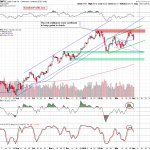Below is the second and final part of my exclusive interview with distinguished financial writer Alex Green of the Oxford Club and Investment U. You can read the first part by clicking here.
Do you look at cycles?
The thing about cycles is they’re so obvious when you’re looking in the rearview mirror. “This cycle peaked here, this one peaked there.” It’s difficult, though, when you’re looking forward. There’s nothing but a blank slate ahead of you to know when these cycles are going to start and when they’re going to end. So I’m not a great analyzer of cycles—I’ve never really met anybody who is—but you can learn a lot by looking back at them.
People think we’re just going to have this Goldilocks economy and rising share prices as far as the eye can see, but history shows that it’s going to end at some point. Every bull market’s followed by a bear market. That’s okay because every bear market’s followed by another bull market. I think predicting when this might happen, though, is a mug’s game.
The quant world has really shaken up the stock market. Quant traders tend to be highly leveraged, and when they pick stocks, they might be looking out only four or five days.
Well, I don’t do any of that myself, and when you’re looking at timeframes, four or five days is really short. It’s more like gambling than trading. Stock prices in the very short term are random. This is what a lot of day traders learned the hard way years ago. Obviously when the market’s in a broad uptrend, you can hop in in the morning and out in the afternoon and clip a few cents a share. And I’m not talking about the high-frequency traders, who are using a technological edge to just vacuum up nickels and dimes all day long. That’s a proven way to make money, provided you have the lightning speed necessary to take advantage of short-term discrepancies in the market.













Leave A Comment